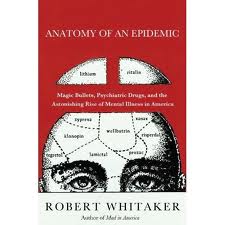Has there been an increase in people disabled by depression?
It is difficult to say for sure as there are so many ways of measuring disabled. Certainly mental health disability payments as a percentage of national income are increasing around the world. Organisations that support people with mental health difficulties are struggling with the numbers of people seeking help.
One way to look at the increase is by comparing figures for two years a long way apart as in this graph…

Disabled by depression
I showed this as part of a presentation to 35 college staff. I was surprised by the ferocity of response. I was told that the figures ‘do not compare like with like’. It is true. Ways of recording impairment have changed, yet don’t government agencies usually change the way they describe and measure things so that it looks like they are doing well? Here clearly things are not going well.
The second response was, “That is in USA and they have had a lot of wars in recent years.” I was a bit stunned by this then I remembered reading that there is a widespread belief that Americans for some unknown reason cannot cope with seeing and hearing about violent acts compared with the rest of the world. I feel the argument falls down when we consider America was heavily involved with the Korean war (25 June 1950 – armistice signed 27 July 1953), yet depression rates were low immediately after this war USA could not even claim to have won.
The third response was, “Why 1955?”. The top title on the graph explains this. It was just before the first drugs called ‘energizers’ became available to doctors. These powerful mood altering drugs had adverse effects. The boom in depression got under way. This was followed by the boom in bipolar disorder which is continuing worldwide today.
This recent article also uses 1955 as a reference point for the same reason. It is well worth reading. There are links to the scientific papers that prove depression is enhanced by drugs and bipolar is often caused mainly by taking drugs. http://bipolarblast.wordpress.com/2011/02/10/bipolarstudies/
In researching for our book, (Bipolar Disorder: A guide for mental health professionals, carers and those who live with it’), I was surprised to find that doctors are still able to prescribe some of the very first 1958 style energizers , even though they were proved to be ineffective. Would you recognised these drugs if you were offered them?

